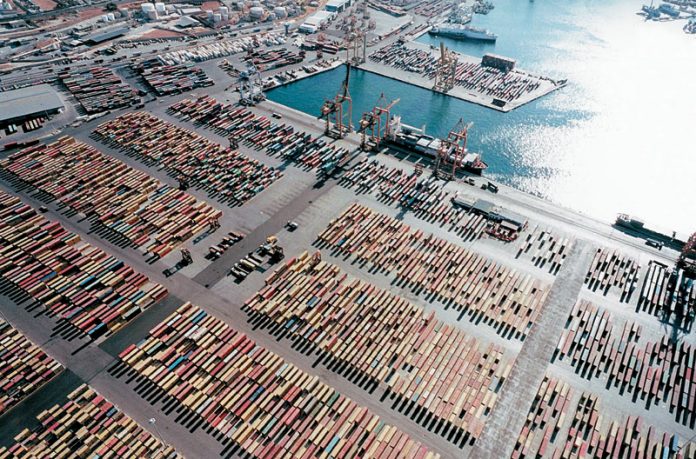The port, a key node in Beijing’s Belt and Road network is being transformed into a significant transit hub for rapidly growing trade between Asia and Europe.
“Piraeus, the fastest growing port in the world, will be the largest port in the Mediterranean by 2019, displacing Hamburg from third place in Europe”, the German newspaper Die Zeit has written a few months ago.
The transhipment of goods has more than tripled since the Chinese bought a stake in Piraeus. In 2017, there were 3.7 million containers (TEUs), increased by 6.4% from 2016, and in 2019 they are expected to reach five million, making Piraeus the largest port in the Mediterranean.
This year the administration seeks to increase freight traffic by 35%. With the recent conclusion of the pier III expansion works, it is able to accommodate two giga-carriers of 20.000 TEUs each at the same time.
Piraeus port has a significant role in rail freight transport as well. Every week, 16-18 freight trains depart from Piraeus for central and western Europe. The programme for the interconnection of China’s and Europe’s sea and land routes has begun to be realised and the port is expected to be transformed into one of the largest freight-forwarding centres and one of the region’s largest centres for logistics services, with added-value services.
“Piraeus is the center of European maritime world”, says the head of Piraeus Container Terminal SA, a Chinese Cosco’s subsidiary, Mr. Zhang Anming, who adds: “The rail freight transport from Piraeus through FYROM and Serbia to Central Europe will last only two days. This is much faster than the time needed by a ship from Asia to navigate through the Suez Canal and the Mediterranean and through the Strait of Gibraltar, through Spain and France, to enter and land their load to the ports of Rotterdam or Hamburg. Austria, for example, imports goods mainly through the ports of European North and could benefit from the new route in the future”.
The port of Piraeus ranked 7th among the 20 largest European ports in 2017, with total container traffic projected to exceed 4,057 (TEU), rising to 38th from 96th in the world ranking – making it the fastest growing container terminal in the world. According to Port Economics, the port of Rotterdam is first with 13,735 million (TEU), the port of Antwerp second with 10,451 million (TEU), followed by Hamburg with 8,820 million (TEU), Bremen with 5,800 million (TEU), Valencia with 4,832 (TEU) and Algeciras with 4,381 million (TEU). Also, the port of Piraeus last year climbed six positions in the world rankings of commercial ports on Lloyd’s List Global Ports Top 100, to 38th place worldwide from the 44th in 2016.
Piraeus port is expected to move even higher this year as it is now in the blueprint of all three major global alliance linkages, and with the completion of the works in early 2019, the total capacity of gates I, II and III will increase to 7.2 million TEU.
COSCO administration is determined to further upgrade Piraeus as the central gateway to Euro-Asian trade, as it is the first European port after Suez. The head of PCT SA underlines that the Chinese group has created 1,600 new jobs while the port investment has upgraded the whole area, attracting at the same time investment interest of Greek and foreign companies, which aim at creating hotel units, congress venues and commercial stores at cruise terminals, benefiting by the city’s development.
“OLP’s management and COSCO SHIPPING remain committed to achieving the goal of making Piraeus the largest port in the Mediterranean in the next 1-2 years,”, says Mr. Zhang. “We are optimistic about this cooperation between China and Greece. These two countries working together can achieve almost everything. We hope that this cooperation will be further enhanced. Not only is Greece the gateway to Europe, but also to the world. China has already helped the Greek economy and will continue to support it as possible”.









































